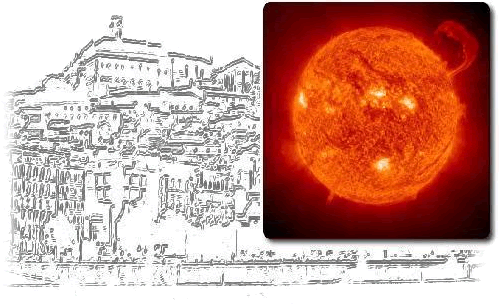|
|
|
|
|
|
|
|
|
|
|
|
|
Juan José Blanco, Mr. - Dr. |
|
Universidad de Alcalá (UAH), Madrid, Spain |
|
|
|
|
|
|
|
Session 5 - Poster |
|
Tragaldabas: a muon ground-based detector for the stuty of the solar activity |
|
H. Alvarez-Pol (8), A. Blanco (3), J.J. Blanco (1), J. Collazo (9),
P. Fonte (3), J.A. Garzon (9), A. Gomez (7), G. Kornakov (6), T. Kurtukian (2), L. Lopes (3),
M. Morales (9,11), A. Morozova (4), M.A. Pais (4), M. Palka (5), V. Perez Munuzuri (10), P. Rey (7),
P. Ribeiro (4), M. Seco (8), J. Taboada (10); 1 - Univ. Alcalá. Alcalá de Henares, Spain,
2 - CEN-Bordeaux, Bordeaux-Gradignan, France, 3 - LIP-Coimbra. Coimbra, Portugal, 4 - Univ. Coimbra,
Coimbra, Portugal, 5 - Jagellionan Univ. Cracow, Poland, 6 - TU-Darmstad, Darmstadt, Germany,
7 - CESGA, S. de Compostela, Spain, 8 - Depto. de Fisica de Particulas & IGFAE - Univ. Santiago
de Compostela, S. de Compostela, Spain, 9 - LabCAF Univ. Santiago de Compostela, S. de Compostela,
Spain, 10 - Meteogalicia, Xunta de Galicia, S. de Compostela, Spain |
|
|
|
A new RPC-based cosmic ray detector, TRAGALDABAS (acronym of "TRAsGo for the AnaLysis of
the nuclear matter Decay, the Atmosphere, the earth's B-field And the Solar activity”) has
been installed at the Univ. of Santiago de Compostela, Spain (N:42°52'34", W:8°33'37").
The detector, in its present layout, consists of two 1.8 m2 planes of two 1mm-gap glass RPCs.
Each plane is readout with 120 pads with grounded guard electrodes between them to minimize
the crosstalk noise. The main performances of the detectors are: an arrival time resolution
of about ~300 ps, a tracking angular resolution below 3°, a detection efficiency close to 1,
and a solid angle acceptance of ~5 srad. Another two planes of RPC detectors will be added in
the next future in order to improve both the resolutions and the acceptance. TRAGALDABAS will
be able to monitor the cosmic ray low energy component strongly modulated by solar activity.
Its cadence and its angular resolution will allow to study in detail, small variations in cosmic
ray anisotropy. These variations can be a key parameter to understand the effect of solar
disturbances on the propagation of cosmic ray in the inner heliosphere and, maybe, provide
a new tool for space weather analysis. |
|
|
|
|
|
|
|




 









 |



